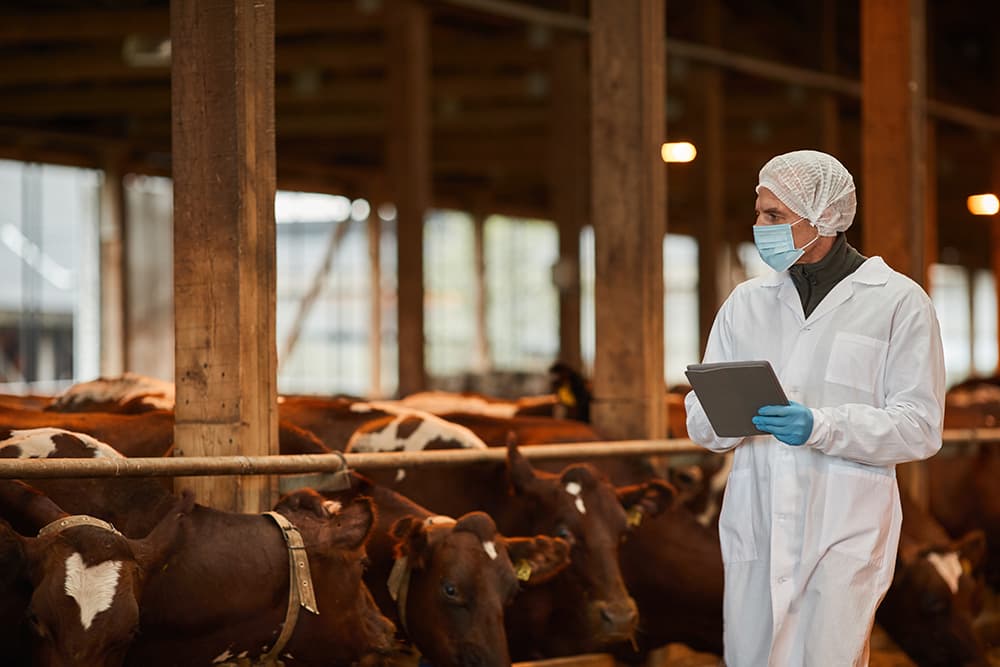Biosecurity Overview
The best practice to protect your farm from diseases-“Biosecurity”
This module will help us to familiarize ourselves with biosecurity. Here, we will learn the importance of and get an overview of the biosecurity practices in beef cattle production for producers or veterinarians.
What Is Biosecurity?
Biosecurity is a farm management practice that helps prevent and stop disease introduction onto a farm or disease spread within or between farms. Biosecurity practices protect beef cattle from disease and help improve overall productivity and farm income.

Why Do We Need Biosecurity?
The U.S. beef cattle industry is one of the world’s largest producers and exporters, with estimated total cash receipts of about $78 billion in 2022. Most beef cattle are maintained on pasture year-round along with calves (before weaning). Some heifers and male calves are kept in herds to replace older cattle. The rest are usually grazed on grass for three to four months and then shipped to feedlots to add weight and protein before slaughter. During all these stages, cattle are highly susceptible to infectious diseases that are present within the country (endemic diseases) and in other countries (foreign animal diseases).
Recent lumpy skin disease outbreaks in cattle in Africa, Europe, and Asia; African swine fever outbreaks in pigs in Europe, Asia, and the Caribbean; and the COVID-19 pandemic in humans clearly show that diseases can quickly cross borders, regardless of geographical distance. In addition, little is known about treating emerging and reemerging diseases. Because of disease complexity, many diseases have existed for decades that do not have effective vaccines or treatments. When new diseases enter a farm, they can stress its herd and threaten the farm’s economic stability.
Biosecurity helps to prevent or at least minimize the transmission of disease-causing agents through bodily fluids, feed, infected equipment, or grazing lands. It is a complex farm management practice and is often difficult to maintain. However, this practice is an effective way of preventing the entry of diseases on a farm and is cheaper than the economical loss a farm could face due to disease.
Disease prevention is the responsibility of all farmers to maintain the health of beef cattle, whether they have small (2 to 40 animals) or large herds (more than 40 animals). However, not all farmers are expected to follow the same level of biosecurity. Every farm has different biosecurity requirements depending on various factors such as herd size, farm location, production type, local disease situation, and herd health status. By having solid biosecurity practices, you can protect your herd from all infectious diseases, not just one specific disease.
What’s Next?
Now that you have a grasp of what biosecurity is, let us dive into various components of biosecurity that you build and practice to safeguard your farm against diseases.
